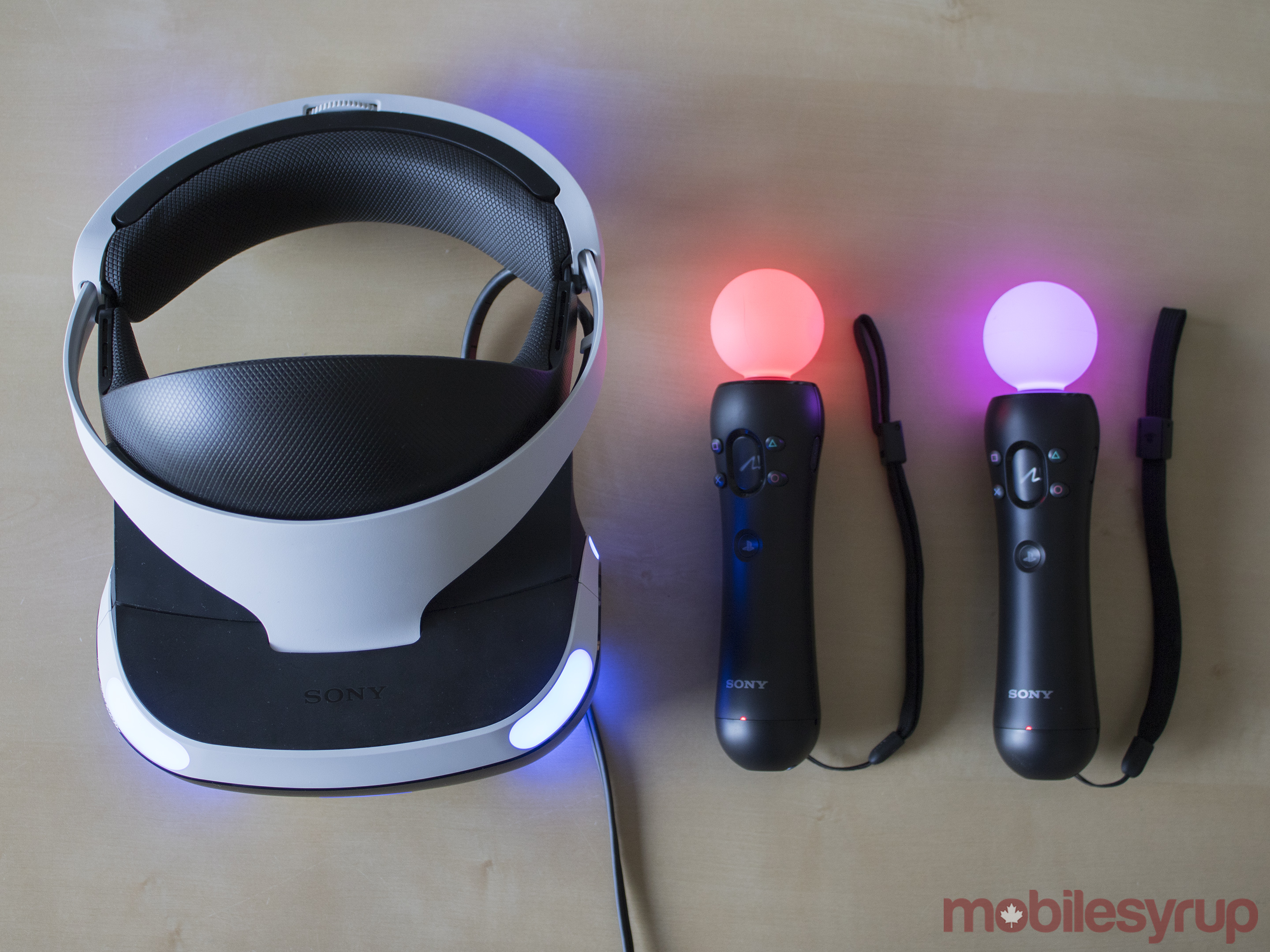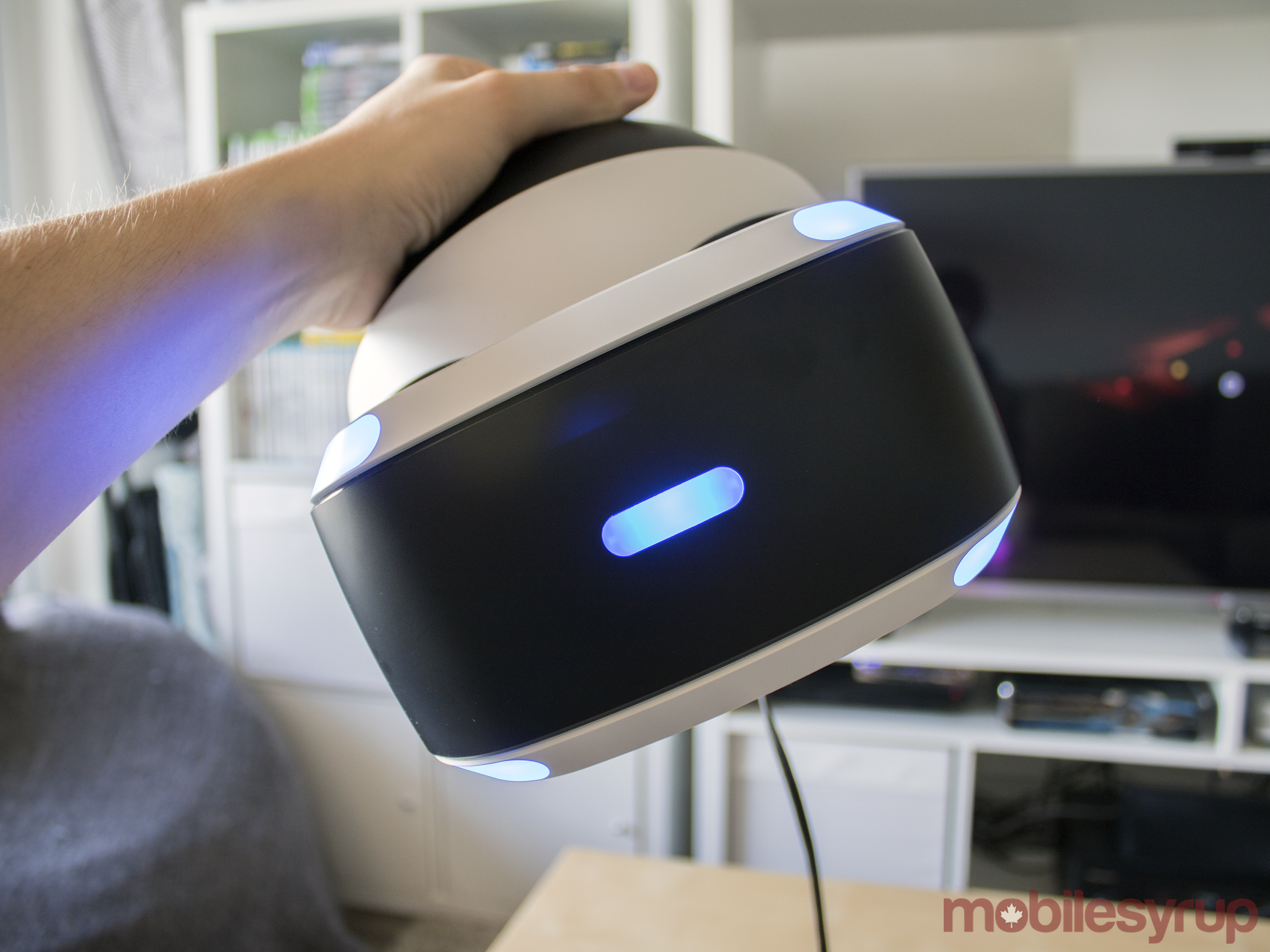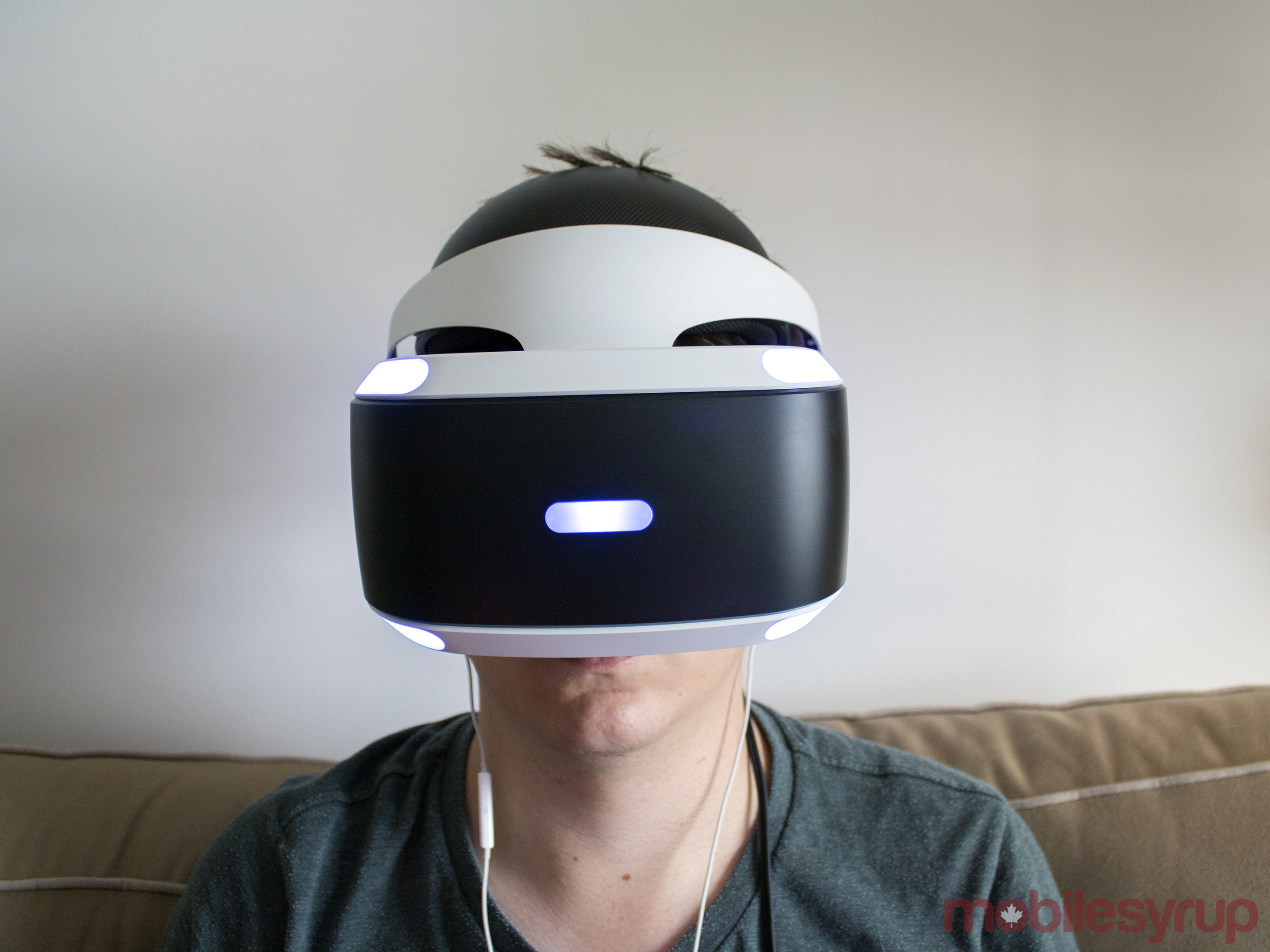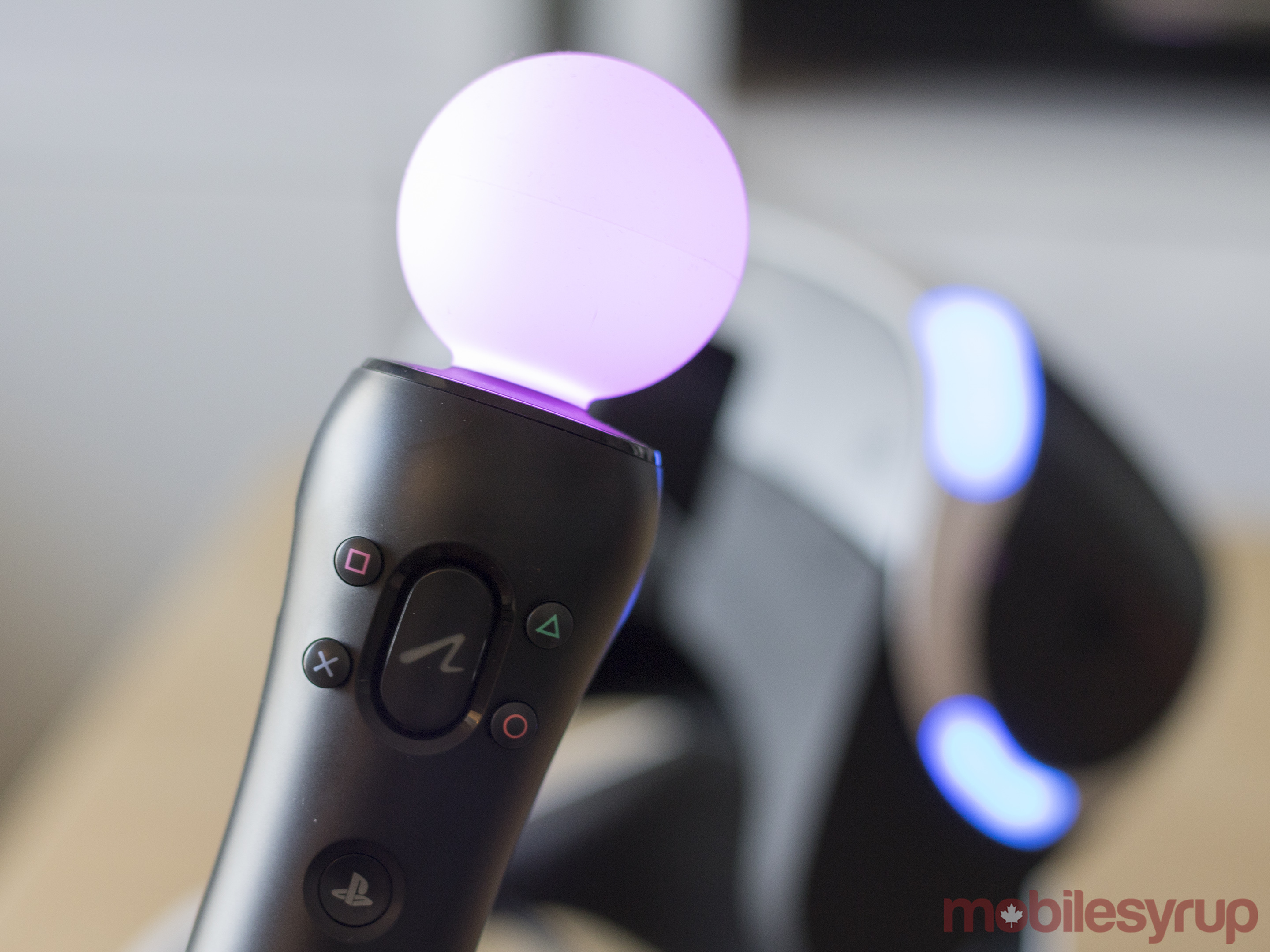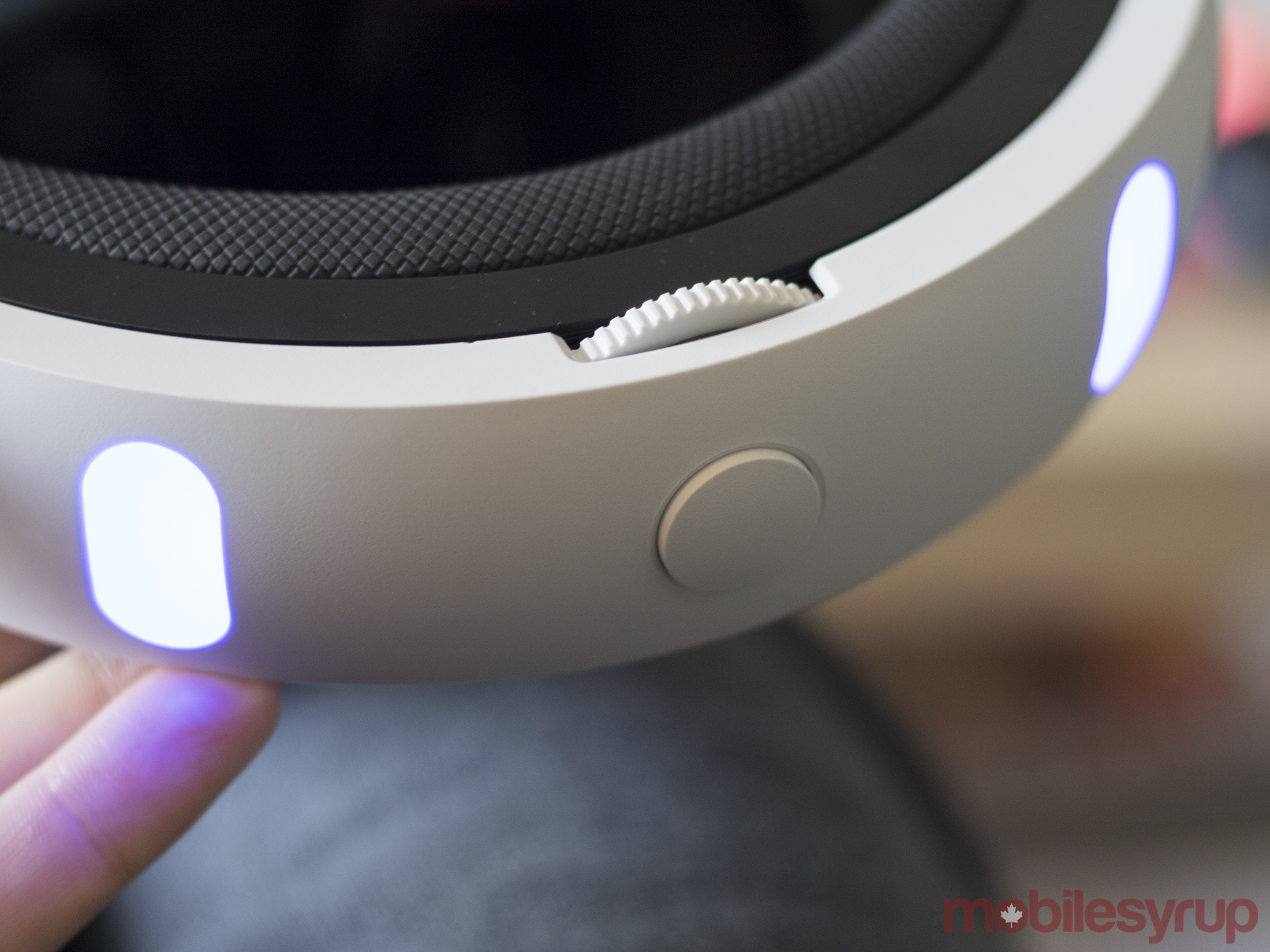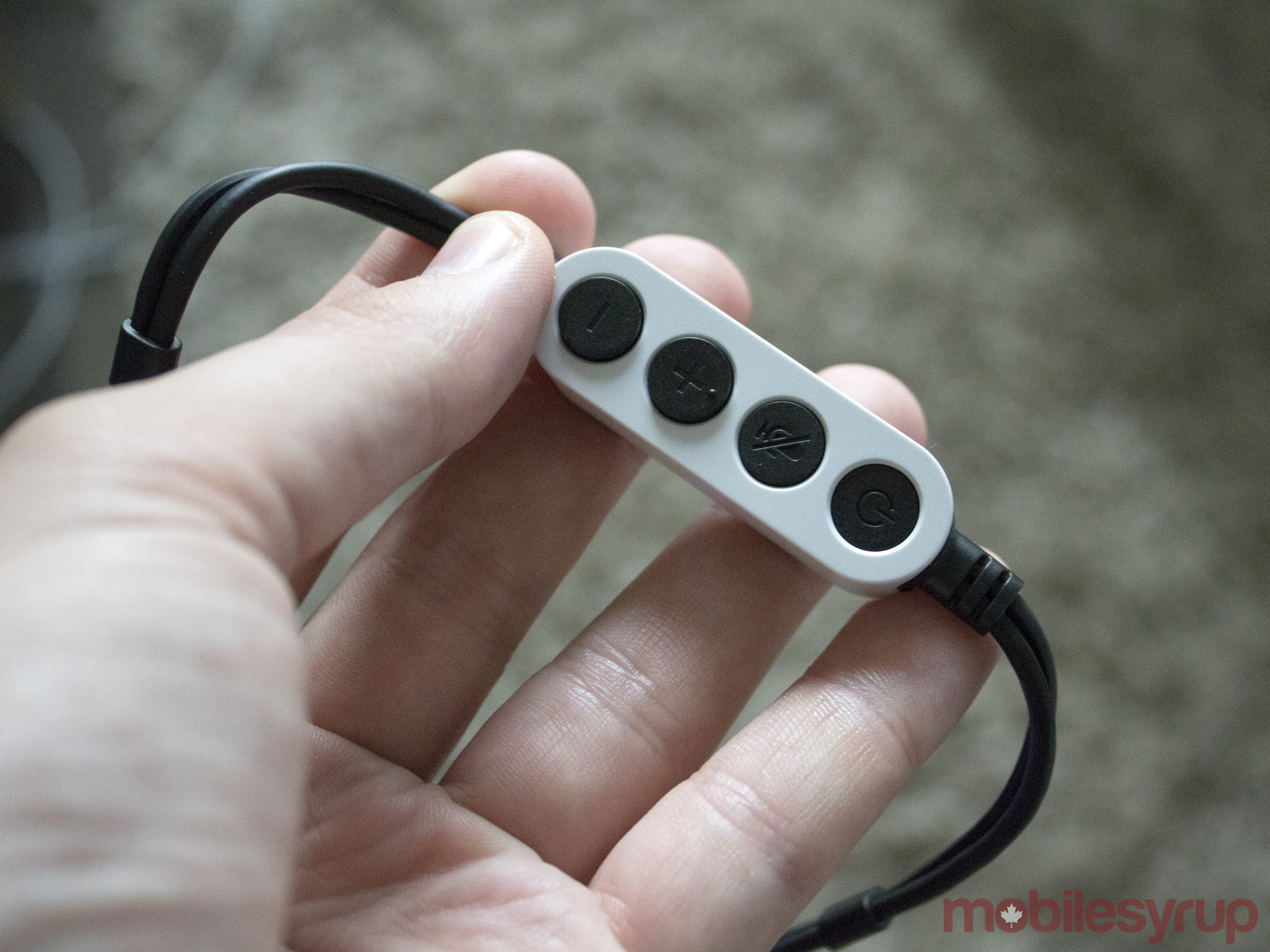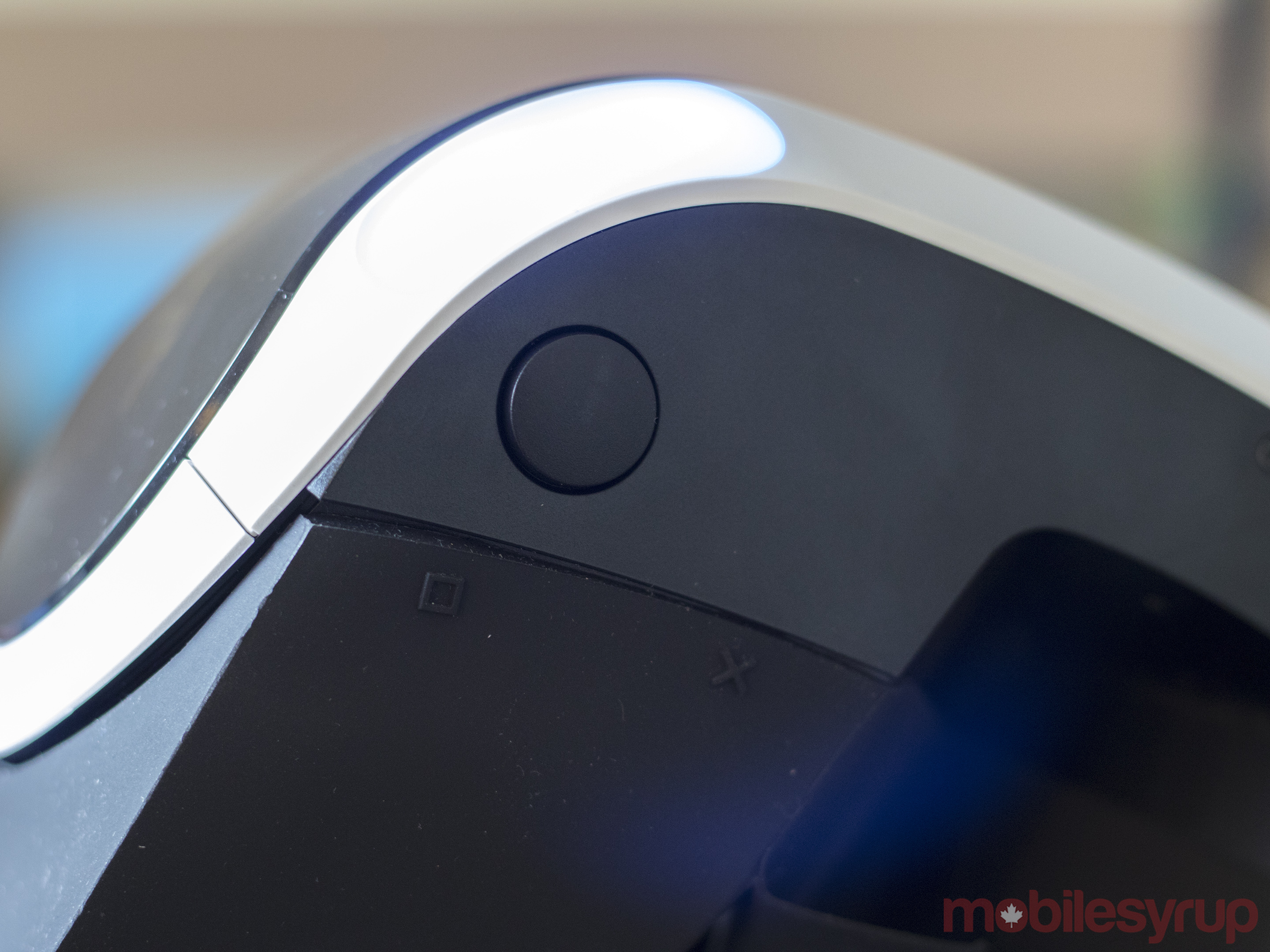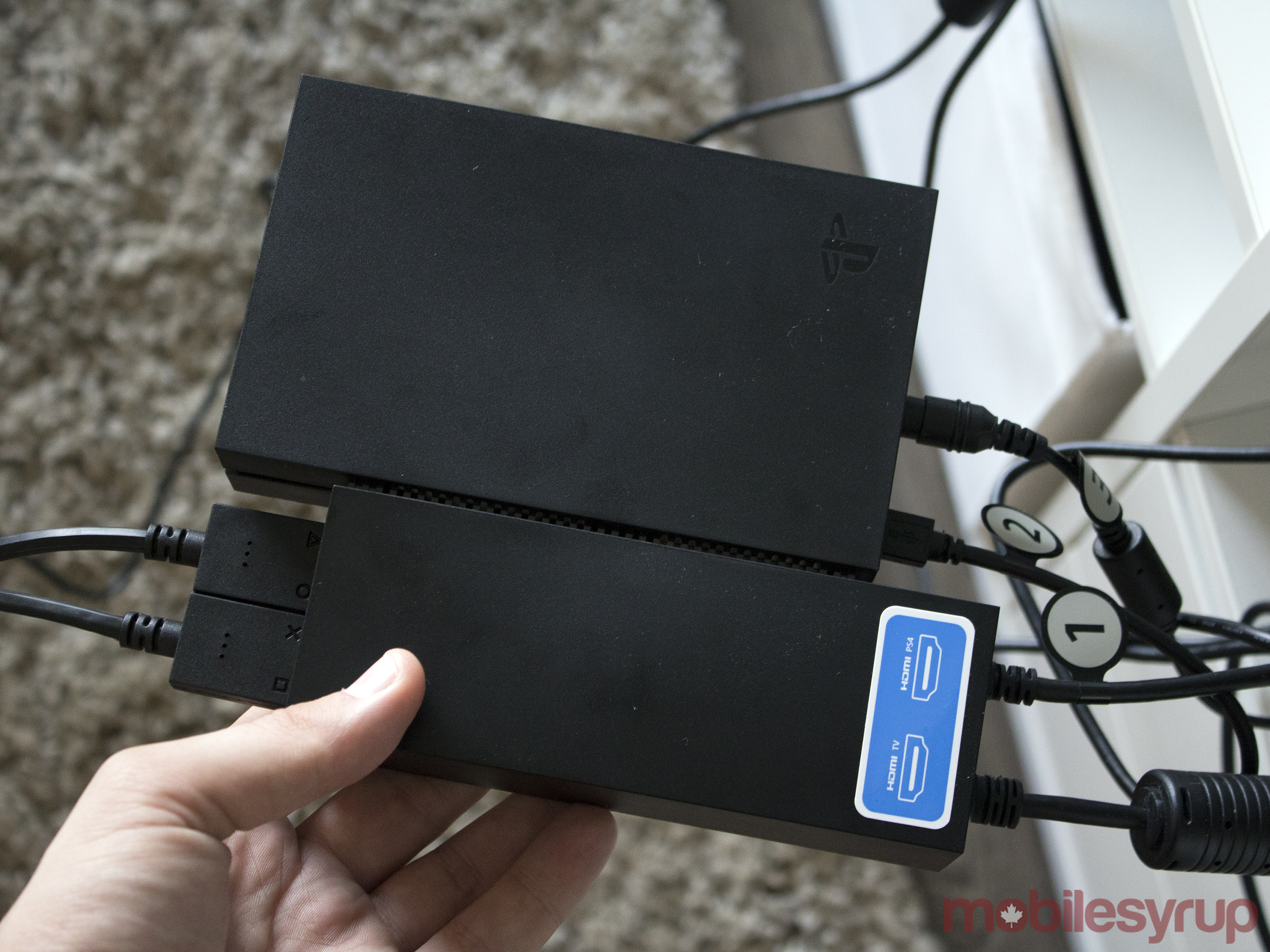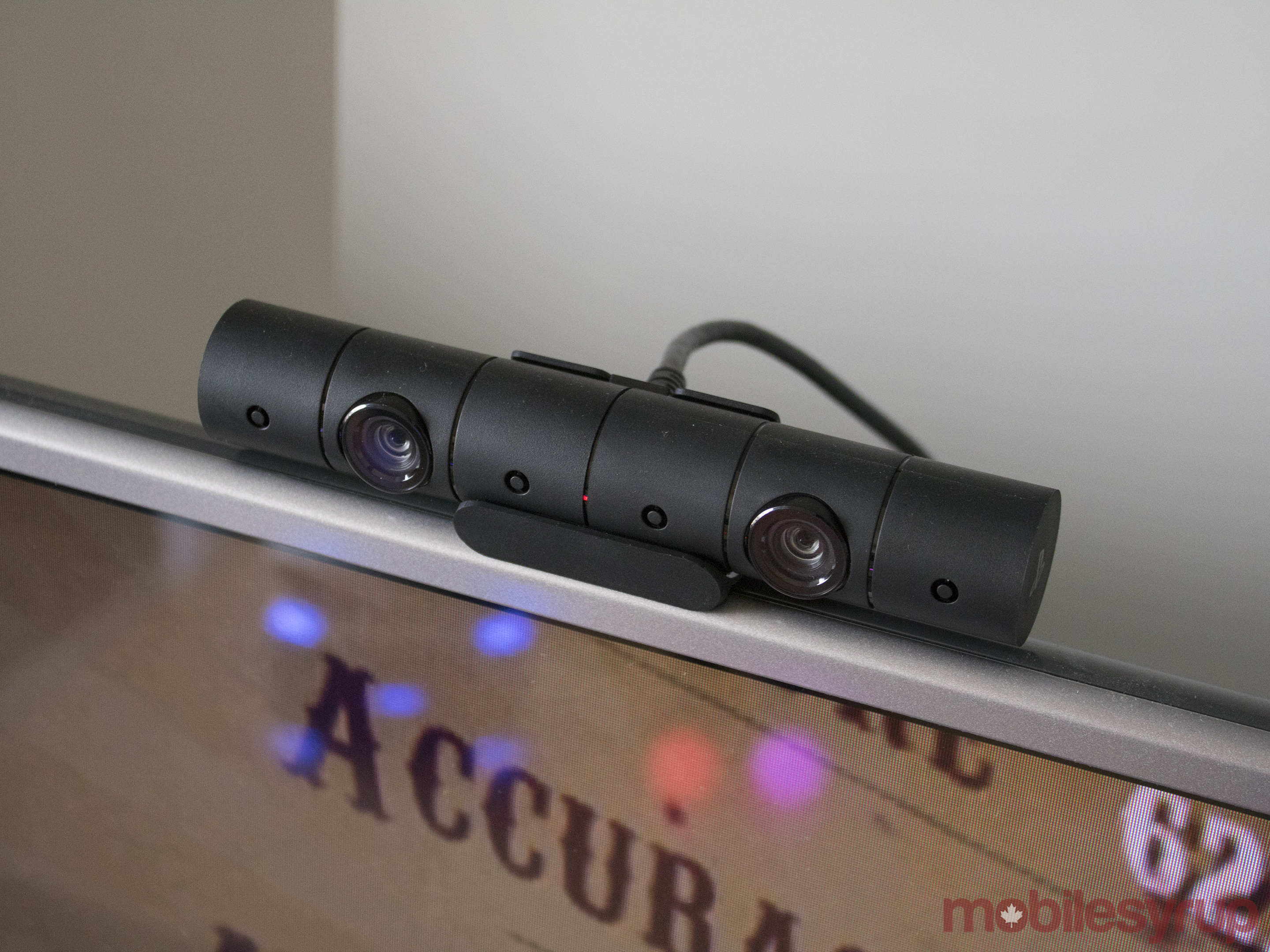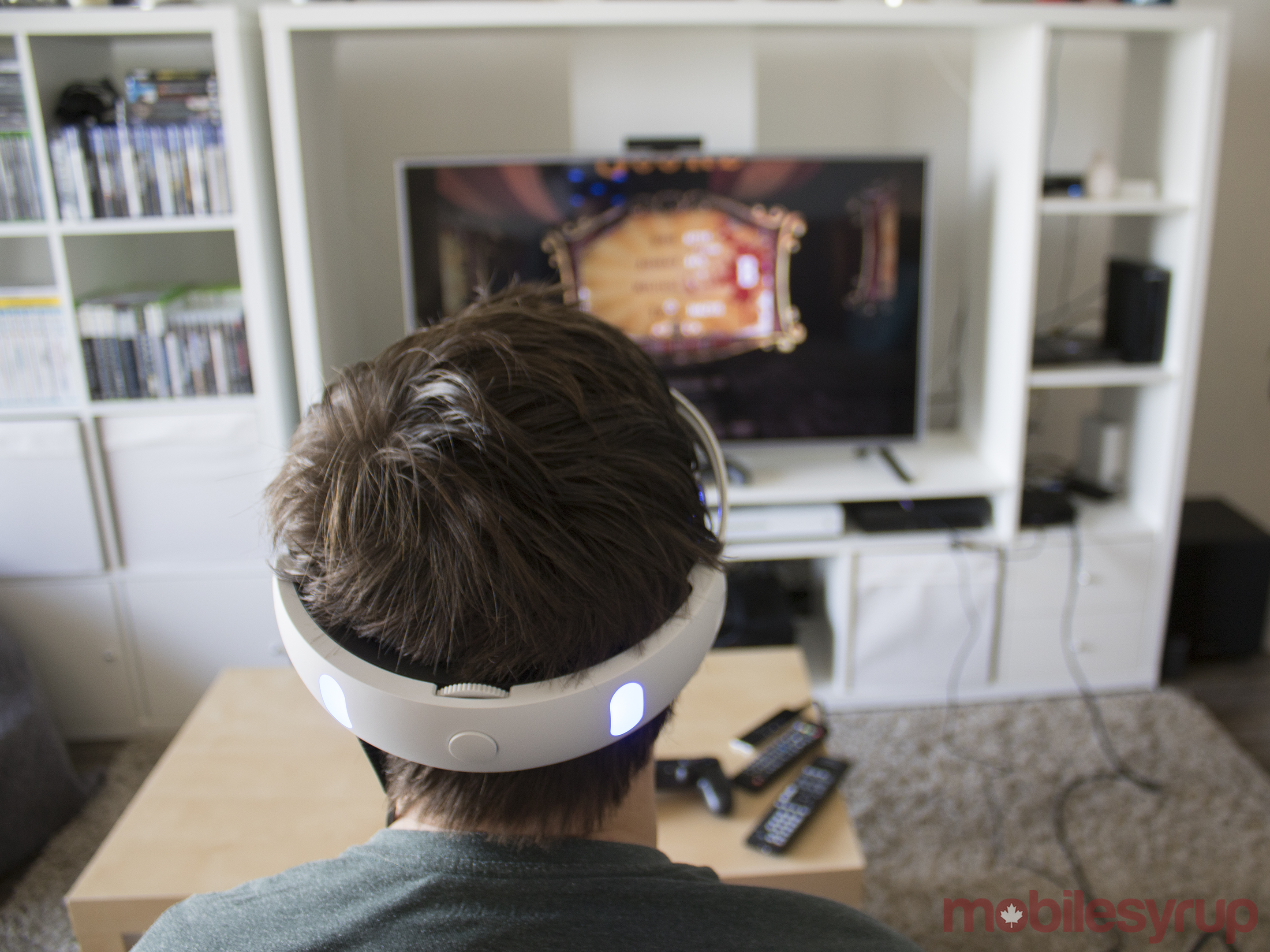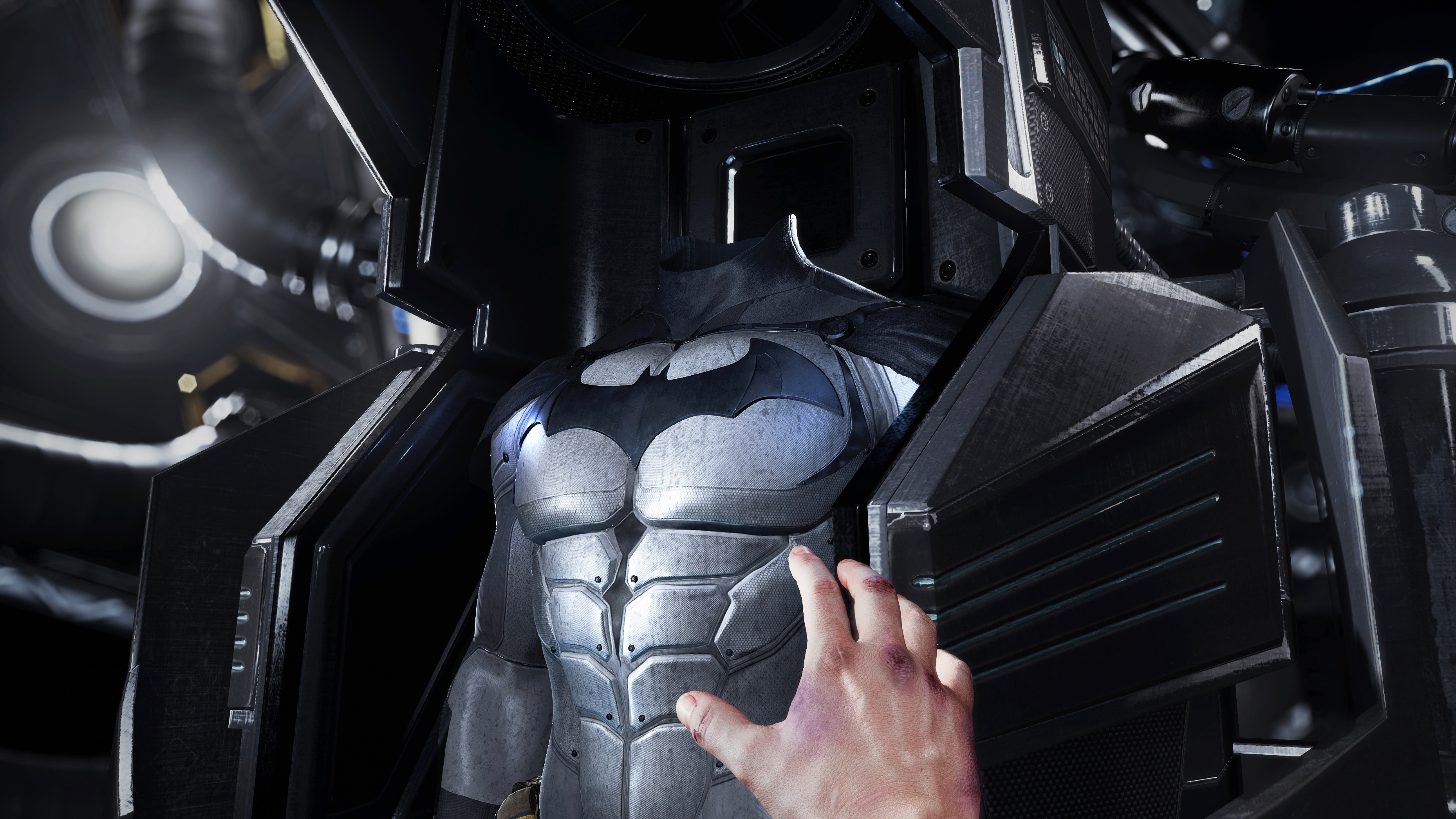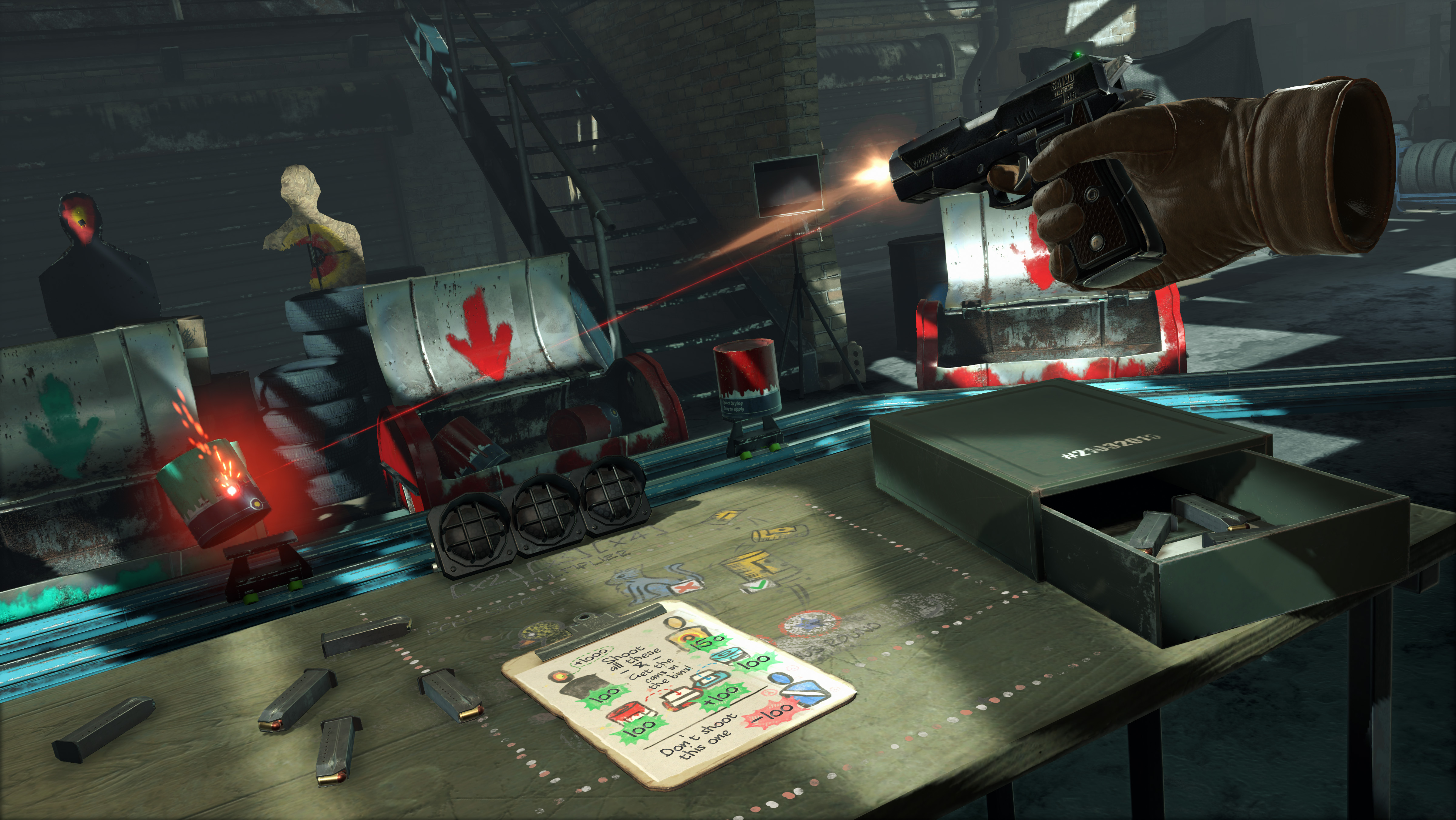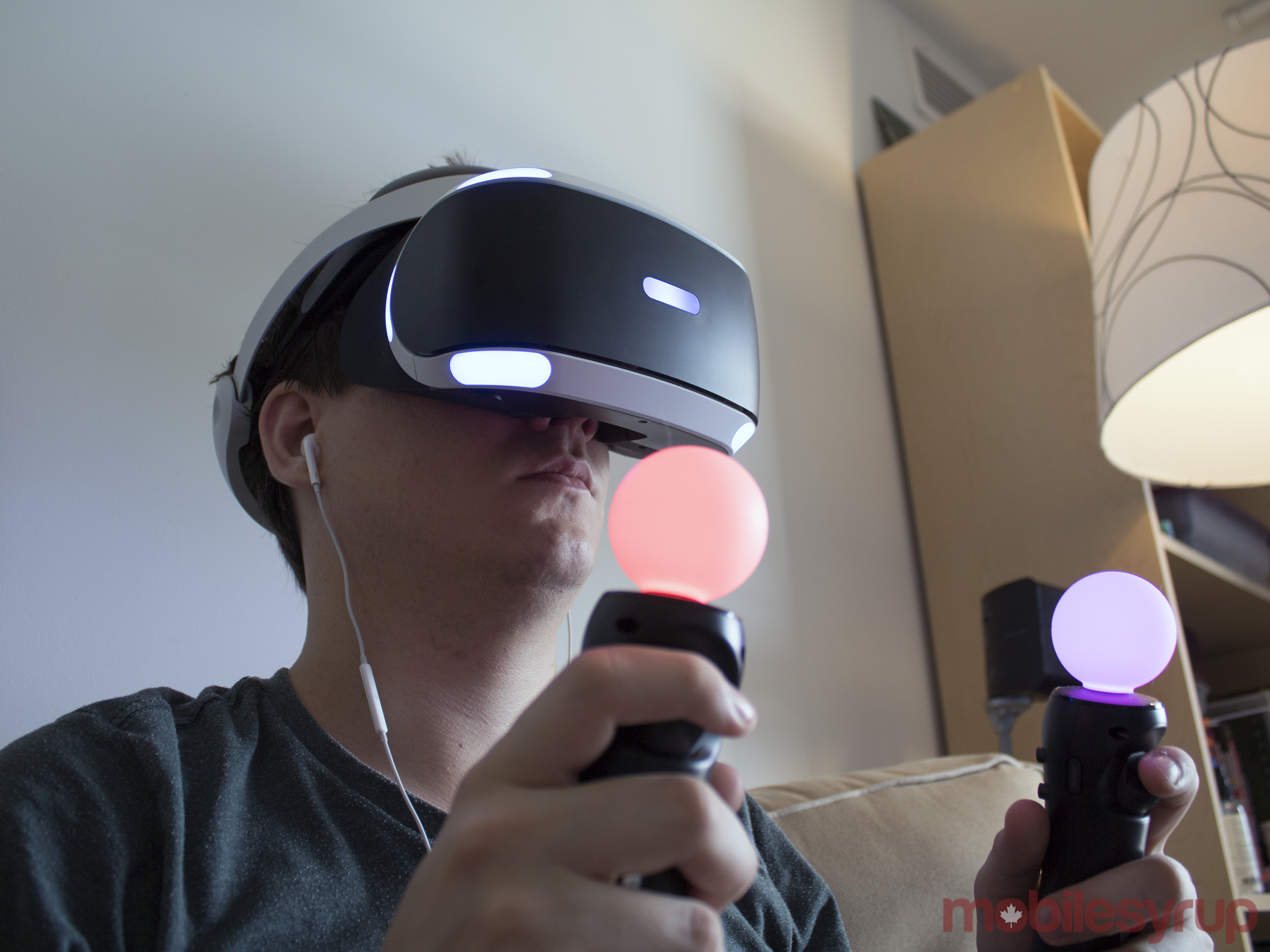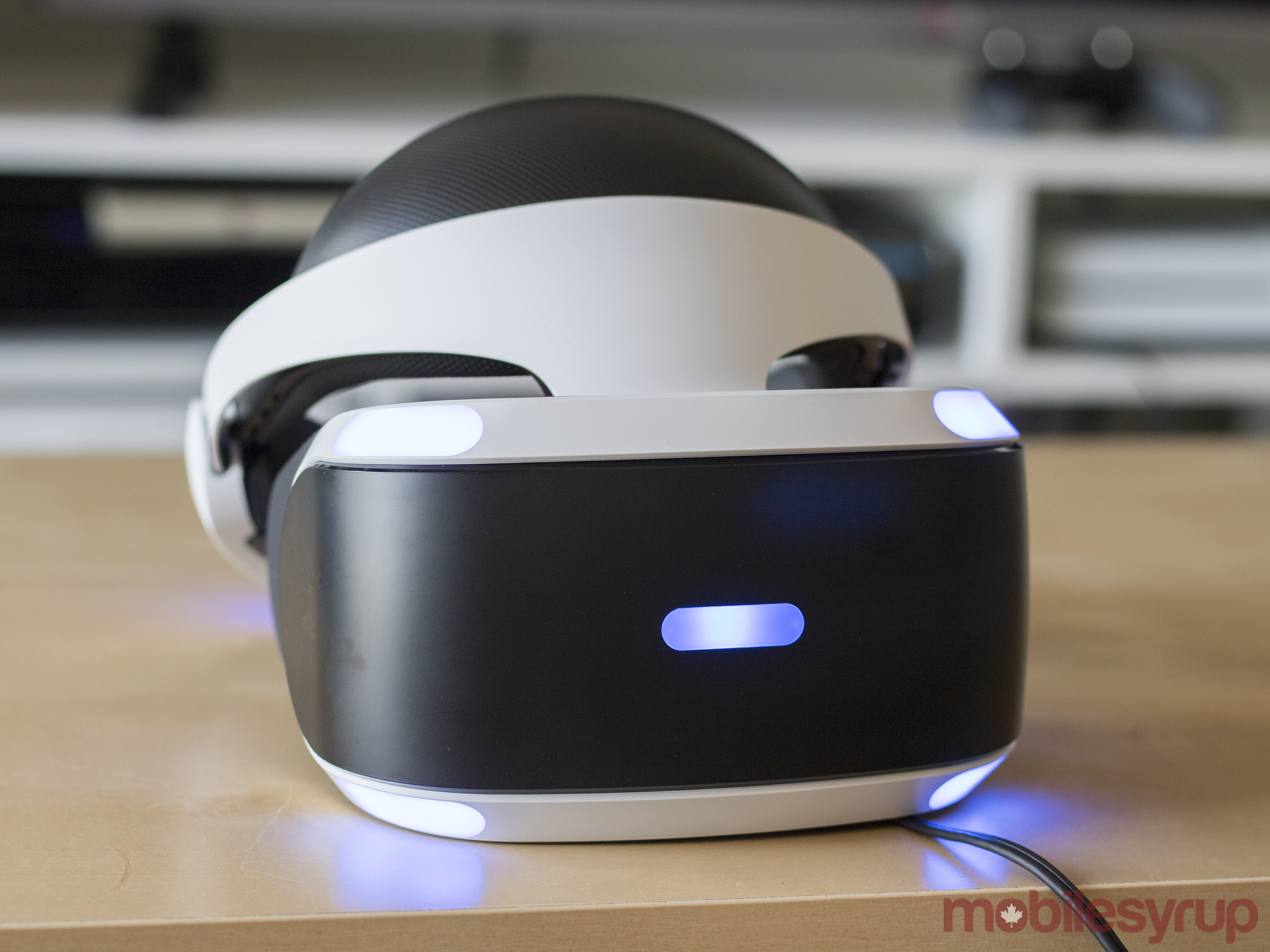
High-end VR’s first chance at mainstream success has finally arrived after years of demos, teasers and sizzle reel-filled trailers.
The main question surrounding Sony’s PlayStation VR (PS VR) is whether or not the headset has the ability to push high-end VR to the masses.
So let’s get this out of the way first: Yes, Sony’s PS VR is the easiest to setup high-end headset on the market and it’s also the least expensive, especially if you already own a PlayStation 4 (PS4).
On its own, PS VR is priced at $549 CAD, though most people will opt for the pricier $699 bundle that includes a pair of Move controllers and a PlayStation Camera. On top of this cost is the price of the PS4 at $379, coming to a total price of $1078 for those who don’t already own Sony’s console; a steep price tag.
$1078, however, gives you a complete VR package, including the device that powers the headset. The HTC Vive is priced at $1,149 CAD just for the headset alone, with the Oculus Rift coming in at $849. On top of this price, you also need a high-end gaming setup that will typically cost between $1000 and $1500 dollars.
To my surprise, PS VR is also for the most part on par with the HTC Vive and Oculus in terms of visuals and tracking functionality, though the Vive’s room-scale functionality remains unmatched. Somehow, Sony has found a way to eek enough power out of the PS4, allowing its headset to compare admirably to the Vive and Rift. Keep in mind a more powerful, PlayStation 4 Pro is also still on the way.
PlayStation VR has a distinct advantage over other high-end VR headsets in a broader industry context. When developers create games for Sony’s headset, they are able to build the experience with just the PS4’s technical specifications (or rather limitations) in mind, allowing creators to ostensibly do more with less powerful hardware. When making a game for the Vive or Oculus, developers are required to consider a wide variety of graphics cards, processors and a slew of other specs. In most cases, this forces them to develop their title to run on high-end gaming rigs as well as mid-range VR-capable PCs.
There are also approximately 43 million PS4s out there right now, giving PlayStation developers the potential to reach a much wider install base that could surpass both the Vive’s and Oculus’ sales in a matter of months.
For this install base to grow, however, PlayStation VR needs to impress and offer users an accessible, high-end VR alternative that features games actually worth playing, something the Vive and Oculus have yet to do.
Does PS VR shake this trend and offer games and experiences worth checking? In some respects it certainly does, though in others, Sony’s long-awaited virtual reality headset falters.
Specs
- Dimensions: 187mm x 185mm x 277mm Processor unit: 143mm x 36mm x 143mm
- Weight: 610g Processor unit: 365g
- Display: 5.7-inches, 1920 x 1080 pixel resolution, 120hz, 90hz
- Field of view: 100 degrees
- Sensors: Six-axis motion sensing system (three-axis gyroscope, three axis accelerometer
- Connection interface: HDMI, AUX, stereo headphone jack Processor unit: HDMI TV, HDMI PS4, USB, HDMI, Aux
- Processor unit function: 3D audio processing, social screen (mirroring mode, seperate mode, cinematic mode
The best looking and most comfortable VR headset
While PlayStation VR isn’t a wild reimagining of the standard VR headset, it is sleek and considerably more attractive looking than the Vive or even the Oculus Rift. Over the course of my week with PS VR, I’ve had numerous multi-hour play sessions and wasn’t irritated by the headset’s weight or fit.
This is something I haven’t been able to say about the Vive, which at least for me, turns my face into a sweaty mess after only a few minutes of playing. This issue is exemplified when playing more intensive, physically demanding games .
Overall Sony’s head-mounted display adopts a minimalist look and features black and white matte plastic with strategically placed blue lights that the PlayStation Eye camera tracks in order to detect location and head movement.
I’ve gone hands-on with PS VR in the past and felt that while its head tracking was decent, it still didn’t feel quite as accurate as its competitors. With the retail version of PS VR, those head tracking problems seem to be gone, even in my somewhat cluttered, dimly lit apartment, thanks to latency measuring in at just 18ms.
Under the hood, the PlayStation VR features a 5.7-inch OLED display with a 1920 x 1080 pixel resolution, amounting to 960 x 1080 pixels per eye though on one panel, with a 100-degree field of view and 120Hz refresh rate. Despite the fact that PlayStation VR features a lower resolution than the Oculus and the Vive’s 2160 x 1200 pixel resolution screens, which amount to 1080 x 1200 per eye, the difference in quality is negligible.
Like the Vive, PS VR also features a head-phone jack, allowing any pair of headphones featuring a 3.5mm male plug to hook into the headset, all with surprisingly impressive 3D audio (I’d even say the 3D audio is better than the Vive’s). I found standard over the ear headphones felt a little too bulky for my taste because of the PS VR’s ergonomic shape, and instead opted for earbuds, though this decision will come down to personal taste (PS VR comes with a pair of in-ear headphones).
The PlayStation VR’s secret to comfort is the fact that all of its weight sits on the top of your head, putting most of the pressure on the bridge of your nose and forehead.
The material that constructs PlayStation VR’s liner is also rubber rather than fabric, though the top part of its clasp features a pillow-like mesh construction. You might think this would make the headset uncomfortable but it actually doesn’t.
In my experience, the rubber lining is great at blocking the outside world, though some light does enter through the base just beneath your nose unless you maintain a tight fit. On the plus side, the liner is much cleaner and more hygienic than any other VR headset I’ve tried; just wipe down the head mounted display after a sweat-filled session and you’re good to go.
PS VR’s fit is adjusted by a knob at its rear that allows its band to expand, as well as a button located under the right-hand side of the head mounted display that shifts how far PS VR’s display sits from your head. Both methods of adjustment allow for a more precise and comfortable fit, surpassing the Vive’s awkward band and even the Rift’s strap. I also liked that sliding the headset out with the button on its base allowed me to easily view the outside world without having to actually remove the headset.
And finally, and this is particularly useful for someone like myself who needs glasses, wearing spectacles under the PlayStation VR is not only possible, but also comfortable, considerably more so than the Vive and Oculus. I found pulling out the headset’s display a little farther than normal resulted in a comfortable fit.
How the magic happens
A variety of Sony devices combine together to make PlayStation VR’s headtracking work. In its current form, PS VR requires the PlayStation Camera for head-tracking, a standard Dualshock 4 remote and two Move controllers.
Sony’s Move controllers had their first run back in the ‘waggle’ motion popularized by the Wii, but are being reintroduced and slightly revamped with the PS VR. The same can be said about the PlayStation Camera, which first launched alongside the PS4. Sony’s motion tracking lens is also getting an aesthetic rework and is required for PlayStation VR to operate.
While the wand-like Move controllers felt half-baked with the PS3, they work great with PS VR and are comparable to the level of tracking the Vive is capable of with its wands, though they sometimes do run into minor tracking issues.
Next, a processor unit facilitates the connection to the PS VR, your television, and allows for 3D audio to wired headphones via the headset’s built-in inline remote. While the setup process initially seemed daunting, compared to putting together the Vive, I was up and running with PlayStation VR in a matter of minutes. Arranging the PlayStation Camera on an angle that makes sense is, however, somewhat difficult, especially if you’re using the headset in a small space. Also, PS VR’s output resolution to the television, allowing observers to view the action going on inside the headset, is a sub-HD resolution. This is disappointing, but given that PS VR is powered by the PS4, also understandable.
Overall, PS VR requires a 1.9m x 3.0m box of space to operate properly, though you can get away with less room with most titles. Batman Arkham VR is perhaps the most notable example of a game that requires a lot of space because it features a small amount of Vive-like room-scale tracking. Think of this as a less accurate version of the Vive’s standing room tracking system.
Some titles like Tumble VR, Wayward Sky and Job Simulator utilize the Move controllers, whereas others such as Battlezone requires the DualShock 4. There are also games that offer players the choice between the Move or Dualshock 4. Menu navigation can be performed with the Move remotes, though it’s finicky at best and in most cases unresponsive.
This means that I commonly found myself setting down the Move controllers in order to pick up the Dualshock 4 for a brief period of time in order to navigate through menus. This creates a jarring experience that unfortunately seems unavoidable for Sony, though I can’t help but wish there was a better way to navigate when using the Move remotes.
The games
Just like any video game console, PS VR will live or die based on the experiences that come to the device. Unfortunately, at least at launch, PlayStation VR’s lineup is lacklustre, with most of the title’s I’ve tried feeling more like demos than actual games. It’s important to note that just like the Vive and Oculus, PS VR is still in early days, so this issue could change in a matter of months.
Games like Arkham VR, a title that puts you in the role of Batman from a first-person perspective, feature some of the most impressive graphics I’ve seen in a virtual reality title. Other games like Wayward Sky, a cute, third-person point and click adventure game, Tumble VR, a block-building puzzle game and Sony’s VR demo collection, VR Worlds, offer players unique, worthwhile experiences.
Games worth skipping include Until Dawn: Rush of Blood, a snore-inducing on-rails horror shooter, Battlezone, which actually made me sick because it gives you full orientation control via the Dualshock 4, and Harmonix’s trippy but ultimately not very interactive, Harmonix Music VR.
Right now, PlayStation VR’s launch line-up is hit or miss and I have admittedly not tried every title set to be available at launch, just the marquee games sent to me by Sony.
There are sure to be more gems on the platform than what I’ve discussed in this story, with Eve Valkyrie, Rez Infinite and Playroom VR being the three most notable examples. At launch, however, just don’t expect what some would consider full-fledged games; PS VR is still in its infancy and the headset’s launch line-up exemplifies this fact.
What holds PlayStation VR back right now is its lack of room-scale, one of the key features that makes the top tier VR headset on the market right now, the HTC Vive, such a compelling experience. It’s worth noting that the Rift is also getting similar functionality when its Touch controllers launch later this year.
Some titles, like Arkham VR for example, seem to use a more limited version of depth tracking via the PlayStation Camera, in order to detect where the player is located. However, it’s unclear how advanced this functionality is, and common sense dictates that the PlayStation Camera likely isn’t capable of the same level of accuracy as the Vive’s pair of laser shooting base stations.
Still, with games like Driveclub VR, Rigs, Farpoint and most notably, Resident Evil 7 looming on the horizon, the more fleshed-out experiences I’ve been craving since high-end VR’s inception look like they’re only a few months away and likely exclusive to PlayStation VR.
So is it worth it?
Right now, no, PlayStation VR isn’t worth its expensive price tag. However, the same thing can be said about almost any high-end VR headset on the market, especially the often awe-inspiring HTC Vive.
What PS VR does do is make high-end VR accessible and more affordable than ever before. It’s also likely that the first lengthy gaming experiences will land on Sony’s headset first, given its potential to reach a wider audience.
If you set your expectations appropriately, you’ll have a great time exploring the world of high-end VR with Sony’s new headset. If you were hoping for a life changing, industry defining experience, unfortunately PS VR isn’t quite there, at least not yet.
PlayStation VR is set to launch in Canada on October 13th at $699 for the bundle that includes two Move remotes and the PlayStation Camera, with the headset alone being priced at $549.
Pros
- High-end VR is now more affordable than every before
- Extremely comfortable
- Looks cooler than most VR headsets
- Likely that the best games will come to PS VR first
Cons
- Cheaper than the Vive and Oculus but still expensive
- Visuals are often marginally worse than competing headsets
- Control scheme is often confusing
Update 10/12/16: The embargo on four additional PS VR games, Rez, Headmaster, Rigs and Keep Talking and Nobody explodes, four titles I didn’t get to try until after my review of Sony’s headset went live, has lifted. None of these games, except for Rigs, feel like fleshed out experiences, though I did have fun playing both Keep Talking and Nobody Explodes and Headmaster.
In Headmaster, players head a soccer ball into a net; this is the entire game. While this game doesn’t offer the most compelling experience, it does feature a multiplayer mode where players are able to take turns, each vying for the highest score. It’s headtracking is also impressively accurate. Keep Talking and Nobody Explodes on the other hand, is a faithful recreation of the Oculus and Vive version of the game, though for some strange reason the game doesn’t feature Move controller support. In terms of Rez Infinite, while it’s fun to play the classic arcade game revamped for virtual reality, VR doesn’t really add much to the overall experience.
Rigs is perhaps PS VR’s most interesting launch title. The game is played from a first person perspective, either with the player looking around to change their direction, or with the Dualshock 4’s thumbsticks, and features a fictional sport where people in mech-like vehicles battle one another.
Visually Rigs is impressive and its controls, whether using head or controller navigation, are surprisingly accurate (somehow, the game also didn’t make me motion sick). I’ve only spent a brief amount of time with Rigs so far, but it’s one of the most in-depth VR experiences I’ve had so far with any headset. It’s also worth noting that the game features online multiplayer, though I wasn’t able to access the feature during my time with the game.
MobileSyrup may earn a commission from purchases made via our links, which helps fund the journalism we provide free on our website. These links do not influence our editorial content. Support us here.

